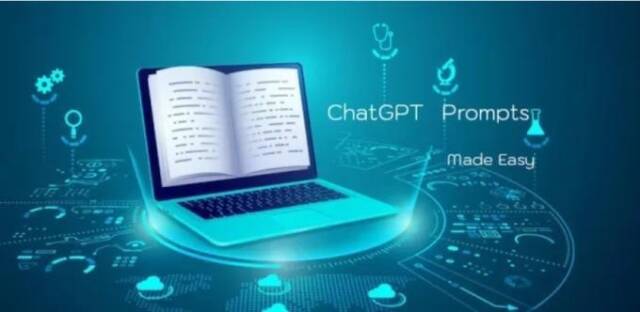ChatGPT is a cutting-edge artificial intelligence language model created by OpenAI. It’s a versatile tool that can generate human-like text based on the ChatGPT prompts it receives. The way you frame your ChatGPT prompts can significantly impact the quality and relevance of the responses you get.
In this blog, we’ll dive into the fascinating world of ChatGPT prompts and explore the various types and best practices.
Table of Contents
Art of ChatGPT Prompts
Before delving into the different types of prompts, let’s understand what a prompt is. A prompt is a message or input you provide to ChatGPT to initiate a conversation or request information. The model generates responses based on the context and information provided in the prompt. Here are some common types of prompts:
1. Informational Prompts:
Informational prompts are used when you want ChatGPT to provide facts or explanations. For example, you could ask, “What is the greenhouse effect?” and expect a detailed explanation in response.
2. Creative Prompts:
Creative prompts are ideal for generating content like stories, poems, or imaginative text. You could ask, “Write a short story about a time-traveling cat,” and ChatGPT will craft a unique narrative.
3. Conversational Prompts:
Conversational prompts are designed to initiate a conversation with the model. You can use these to simulate interactions with a virtual character. For instance, “Tell me about your day” will lead to a conversation as if ChatGPT is a person sharing their daily experiences.
4.Coding and Programming Prompts:
ChatGPT can be used for coding tasks. You might input code snippets or questions like, “Write a Python function to calculate the Fibonacci sequence,” and it will provide code as output.
5.Question-Answer Prompts:
If you have specific questions, you can use this type of prompt. For example, “What are the symptoms of COVID-19?” will result in an answer that lists the symptoms.
Tailoring Your ChatGPT Prompts
The quality of ChatGPT’s responses heavily relies on how well you frame your prompts. To get the most out of the model, here are some best practices:

1. Be Clear and Specific:
Clear, specific prompts are more likely to get accurate responses. If you want detailed information, specify the details you need in the prompt.
2. Provide Context:
Context matters. Explain the context of your question or request so that ChatGPT understands the scenario and can provide more relevant answers.
3. Experiment:
Don’t hesitate to experiment with different prompts. Sometimes, changing a few words or rephrasing a question can yield better results.
4. Use Follow-Up Prompts:
You can use follow-up prompts to refine or clarify a response. For example, if you receive a response that’s close but not quite what you want, you can ask, “Can you elaborate on that?” to get more information.
Ethical Considerations
While ChatGPT is a powerful tool, it’s important to use it ethically. Avoid using it for malicious purposes, spreading false information, or engaging in harmful conversations. OpenAI has guidelines in place to ensure responsible use of their technology, and users should adhere to them.
Real-World Applications – ChatGPT Prompts
ChatGPT’s versatile nature makes it a valuable tool in various real-world applications:
1. Content Generation:
Content creators can use ChatGPT to draft articles, blog posts, or marketing materials efficiently.
2.Customer Support:
Companies can employ ChatGPT for handling routine customer queries, freeing up human agents for more complex issues.
3. Education:
Educators can use ChatGPT to explain complex concepts, generate practice questions, or assist students with homework.
4. Programming Help:
Developers can leverage ChatGPT to find solutions to coding problems or get code snippets quickly.
Future Developments
OpenAI is continually improving its models and the capabilities of ChatGPT. Future developments may involve even better understanding of context, more accurate responses, and the ability to complete complex tasks. Keeping an eye on these developments can help users make the most of ChatGPT in their applications.
The Power of ChatGPT Prompts

As we’ve explored, ChatGPT prompts are a powerful means of interacting with this AI language model. They can be used in a myriad of ways to achieve various goals. Whether you’re seeking information, sparking creativity, or enhancing productivity, prompts are the gateway to unlocking the potential of ChatGPT.
One remarkable aspect of prompts is their adaptability. The same underlying model can switch roles with a simple change in the prompt. It can be your encyclopedia, storyteller, virtual conversational partner, or even your coding assistant. The diversity of applications is limited only by your creativity and the way you craft your prompts.
Let’s delve deeper into some practical applications and tips for crafting prompts in specific scenarios:
Content Creation with ChatGPT
Content creators, writers, and bloggers often turn to ChatGPT for generating ideas and drafting content. Whether you’re facing writer’s block or need inspiration, ChatGPT can be a valuable resource. Here are some tips for crafting effective prompts in this context:
- Ask for an Introduction: If you’re writing an article and need an engaging introduction, try a prompt like, “Can you provide an attention-grabbing introduction to an article about sustainable living?”
- Generate Ideas: If you’re stuck for ideas, ask ChatGPT for suggestions. For instance, “Give me five unique ideas for blog posts on digital marketing.”
- Edit and Refine: Don’t hesitate to use follow-up prompts to edit or refine generated content. For example, if you receive a paragraph on a topic, you can ask, “Can you expand on the second point you mentioned in the last response?”
Enhancing Customer Support
In a world where customer support is increasingly digital, ChatGPT can be an invaluable tool. It can handle routine queries, assist customers, and provide quick solutions. When using ChatGPT in a customer support context, consider the following:
- Training the Model: Train the model with a dataset of frequently asked questions and answers specific to your product or service. This can help ChatGPT provide more accurate responses.
- Common Problems: Prepare a set of prompts for common issues your customers face, such as, “What should I do if I forgot my password?” This way, you can provide instant assistance.
- Handovers to Human Agents :When ChatGPT encounters complex or sensitive issues, it should be programmed to hand over the conversation to a human customer support agent. Make sure your prompts include instructions for this transition.
Educational Assistance with ChatGPT
Teachers, students, and educational institutions can leverage ChatGPT for a wide range of purposes, from explaining complex concepts to generating practice questions. Here’s how to make the most of this application:
- Concept Explanation: To explain a complex concept, provide context in your prompts. For example, “Explain the concept of photosynthesis in plants to a high school student.”
- Practice Questions: If you’re a teacher lookingto create practice questions, you can use prompts like, “Generate ten multiple-choice questions on the topic of the American Civil War.”
- Solving Math Problems: ChatGPT can help with math problems. You can input equations and ask it to solve or explain step by step. For example, “Solve the equation 3x + 7 = 22.”
Programming and Coding with ChatGPT
ChatGPT’s capabilities aren’t limited to written text. It can be a coding companion, providing code snippets and assistance for various programming languages. Here are some tips for effective coding prompts:
- Code Snippets: Need a code snippet for a specific task? You can ask, “Write a Python code snippet that reads a CSV file and extracts the first five rows.”
- Debugging Assistance: If you’re facing a programming bug, provide the code in your prompt and ask, “Can you help me find the error in this Python code?”
- Algorithm Explanation: ChatGPT can explain algorithms and data structures. For instance, “Explain the quicksort algorithm step by step.”
Question-Answer Interactions
Sometimes, you might need specific answers to questions. Here are some prompts to make your question-answer interactions more effective:
- Comparative Analysis: If you want to compare two products or concepts, frame your prompt as, “Compare the advantages and disadvantages of electric cars and traditional gasoline-powered cars.”
- Historical Context: For historical questions, you can provide context like, “In the context of the American Revolution, explain the significance of the Battle of Saratoga.”
- Scientific Explanations: To get in-depth scientific explanations, be clear about your request. For instance, “Explain the process of nuclear fusion in stars and its role in the universe.”
Read More also on How To Use ChatGPT in Mobile
Conclusion
ChatGPT and its ability to generate human-like text based on prompts represent a significant leap in AI technology. Whether you’re a content creator, educator, customer support representative, or developer, ChatGPT has the potential to transform the way you work. The power of ChatGPT prompts lies in their versatility and adaptability to various tasks and applications.
As ChatGPT continues to evolve and improve, it’s important for users to stay updated on the latest developments and guidelines for responsible use. By crafting effective prompts and adhering to ethical standards, you can make the most of this remarkable technology while ensuring it contributes positively to your endeavors.
The world of ChatGPT prompts is full of possibilities waiting to be explored. So, whether you’re seeking information, sparking creativity, or enhancing your work processes, remember that the quality of ChatGPT’s responses is only limited by the quality of the prompts you provide. Dive in, experiment, and discover the endless potential that ChatGPT offers at your fingertips.
